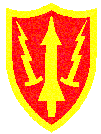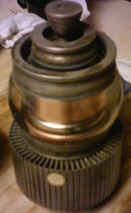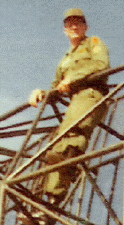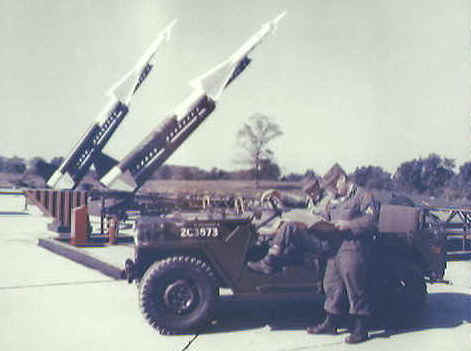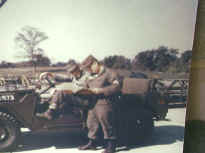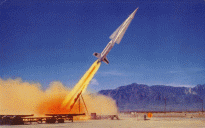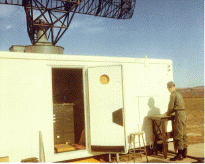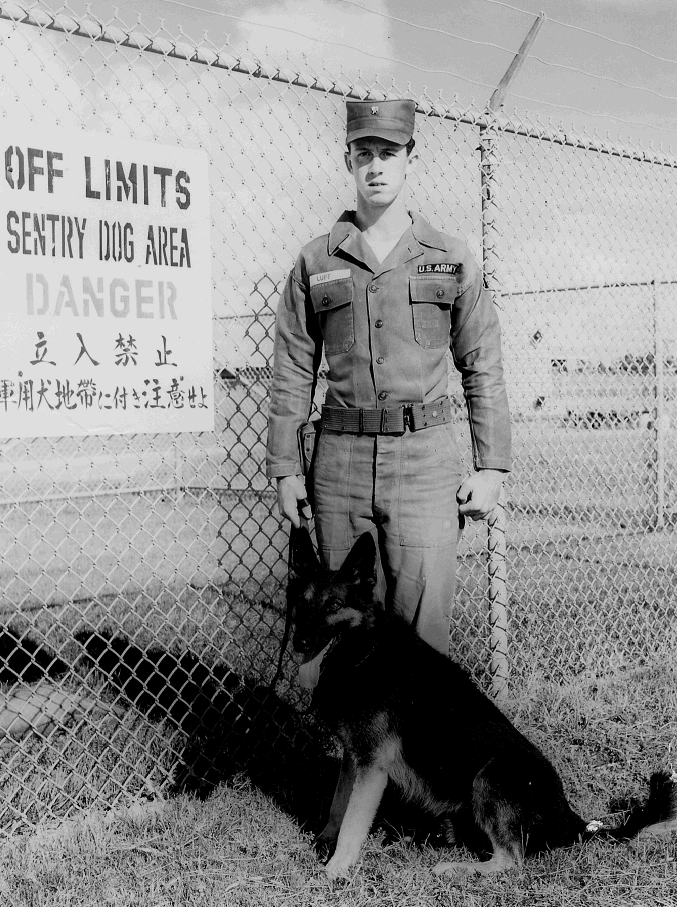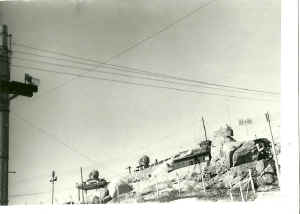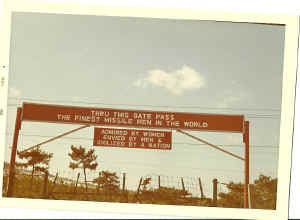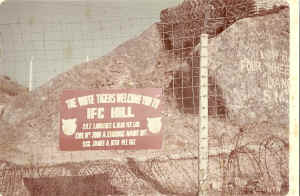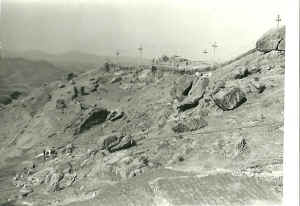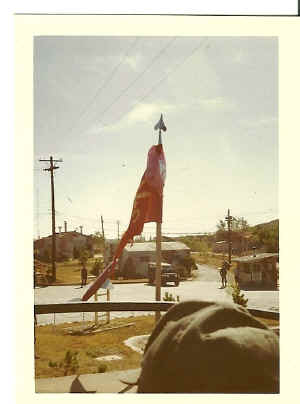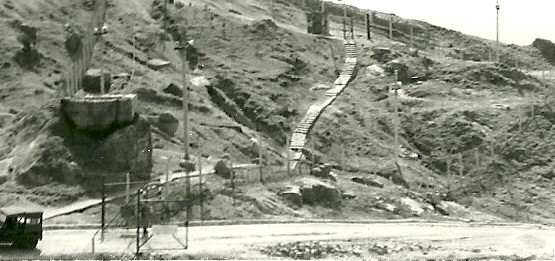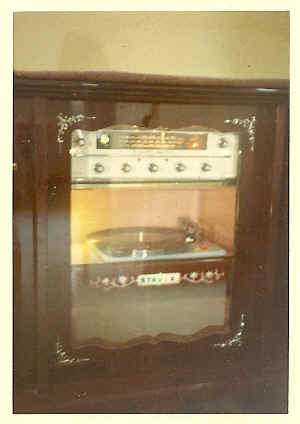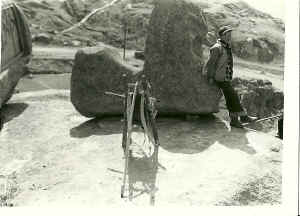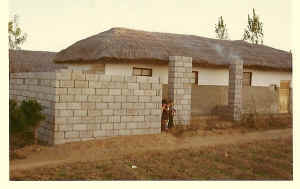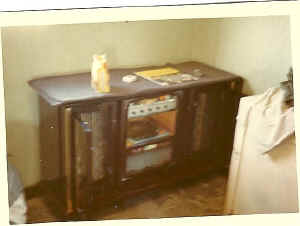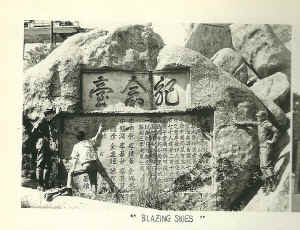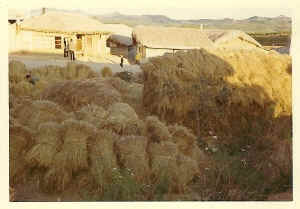 Elliot's
Nike Experiences! Click to view! Elliot's
Nike Experiences! Click to view!
"FIRST TO FIRE!!" "ON THE WAY!!!" |
||||||||||||
|
LA-55 Nike Radar Site, Palos Verdes California
Looking for anything related to Nike radar site LA-55 in Palos Verdes at the dead end of Crenshaw Blvd. I grew up in Del Cerro across from it and would like to re-connect with some of the folk that worked there. My Name is
Ed Sharpe I was trying to Find Dave Fairchild who ran the Generators at LA-55, Unfortunately I found out Dave passed away a yearr ago from Cancer. I was trying to find him to express thanks for all the knowledge he shared with me and parts etc.. I am also still also trying to find Riley and a few others that might remember me I lived
across Crenshaw blvd in Del Cerro at the dead-end of Crenshaw
and was the Kid that used to pester Dave Fairchild and some of you others
for electronics parts, dead magnetron tubes etc and of
course conversation as I grew up thru the 1960s. I should also
express thanks to any of you that took the time to talk with me, fetch Dave
for me when I would hit that buzzer at the gate there. I am sure you
had more important things to do but you took the time... thanks I am
looking for any pictures of Dave, any of the guys,. the equipment any
parts books on Nike etc... I have
fond memories of LA-55 between 1960 and 1970
Ed Sharpe's Nike Birthday Present From Dave Fairchild and others at LA-55. In addition I was given a magnetron tube that did not work but the magnets became the basis for many projects... this was during High School More photos and more story here
|
||||||||||||
|
Photo of Chuck
Zellers on the AN/FPS-75 radar antenna circa 1965. Click photo read about
Chuck's NIKE experiences and to see
the Radar training manuals Chuck uploaded for everyone to use.
|
||||||||||||
|
BATTERY
"C" A Western Electric Article about the NIKE Missile
System
|
||||||||||||
|
The Unknown Nike Site!
The Museum was presented with a 16 x 20 photograph but the person that found it for us Found it in a place separated from it's previous owner thus we are clueless as to where this was shot. any ideas? perhaps the jeep and the jeep number are a clue! will try to post a better photo of it... we used the small camera and the resolution is not too good! - Ed Sharpe archivist One reply we got....
THE PHOTO OF THE ? NIKE SITE ,,,THE
BACK GROUND LOOKS LIKE THE COUNTY PROPERTY OUTSIDE OF DIXON CALIF,,, THE
SITE WOULD BE NORTH OF HIGHWAY 80 ABOUT 3 MILES ALONG A COUNTY RD. ON
ITS WAY TO WINTERS CALIF.
CARL RAMOS
That could be just about anywhere in
California... but it looks to me like what is now the Canyon Country
Area near Saugas. or out the other side of Gorman taking the
back roads. (heading east- southeast).. its so populated now,
i doubt i could find where the concrete pad is, if it still
is there - its been 28 years.
Hope this helps
Cali
|
||||||||||||
|
This card says....Army's NIKE-ZEUS (please can someone clarify?) on face of pc. Post Card is a 30-day service card from a Car dealer; Grant Bishop Chevrolet in Los Gatos California. Stamp on back reads: Ask for Pennzoil with Z-7. - RE: "Nike Zeus" post card - Sorry, the picture you display is a Nike Hercules missile. Chuck Zellers - Editors note - Many times advertising cards seem to carry 'wrong info' thanks Chuck! On the ../nike_sites1.htm web
page, the postcard of the Nike Hercules
|
||||||||||||
|
Russ Fey Discusses 'LIVE FIRING OF THE NIKE' I don't know if you have ever seen a live fire of a Hercules but it is really awe inspiring. I worked at McGregor Range for the year prior to going to Okinawa building 2 Ajax missiles per week for foreign troop training which was going full bore at that time. I was fortunate enough to be in the Assembly and Test section which I found to be pretty interesting compared to some of the other jobs onsite.
The missile was assembled and prepped, including calibrating the guidance system, in the assembly building. The warhead building, which was surrounded by a large earthen berm, is where the activity took place involving explosives such as attaching the warhead section to the missile body and assembling the booster cluster.
|
||||||||||||
|
|
||||||||||||
|
This shows the AN/FPS-75 radar van where the
transmitter, receiver, display and IFF where housed. Receiver video was
sent to the "BC" (Battery Control) van. The video displayed
targets that were selected (acquired) for engagement.
Picture from Chuck
Zellers
click photo for larger view! |
||||||||||||
|
click photo for larger view! This photo shows the IFC (Integrated Fire Control Area) from some distance. The item on the left is the Nike Acquisition radar, the white "ball" in the center is a tracking radar and the radar on the right is the AN/FPS-75 ABAR (Alternate Battery Acquisition Radar). Photo by Chuck Zellers
|
||||||||||||
|
|
||||||||||||
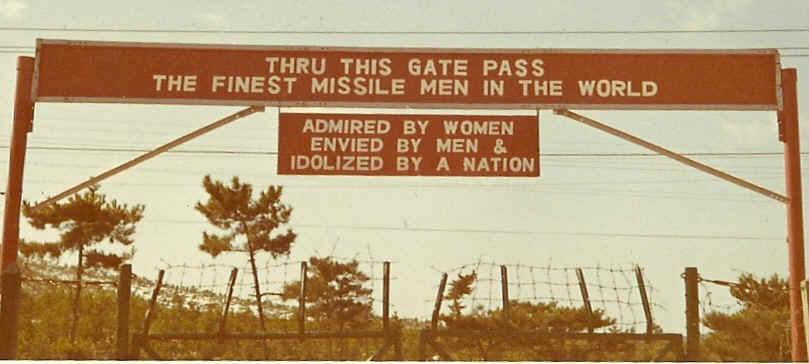
Elliot, I’m sure someone’s filed you in on SNAP locations by now,
but |
||||||||||||
|
|
||||||||||||
|
WELCOME TO AIR DEFENSE |
||||||||||||
While the spectacular successes in the more sophisticated field of rockets and guided missiles tend to overshadow its previous accomplishments, the Redstone Arsenal complex established a commendable record in World War II as one of the best equipped, most productive chemical munitions manufacturing centers in the nation. Over 45-million units of ammunition were loaded and assembled for shipment at the arsenal complex between March 1942 and September 1945, and more than 27-million items of chemical munitions having a total value of over $134.5 million were produced. For their exceptional work, personnel at the arsenal complex won the prestigious Army-Navy E Award nine different times for their outstanding record in the production of war equipment. Once World War II ended, the focus shifted from production to the demilitarization and salvaging of munitions and the deactivation of the huge manufacturing facilities at the arsenal complex. Some of the empty buildings and lands were leased to private enterprise. By 1949, part of the arsenal was advertised for sale. But the sale never happened. A series of events soon transformed these facilities and opened an entirely new chapter to the installations history. Thanks to vision and efforts of Major General Holger N. Ludy Toftoy, and the shrewd lobbying by Senator John Sparkman, Congressman Bob Jones, and officials from the Huntsville area, Redstone Arsenals mission had been totally revamped by 1950. It was now the center of Army missilery and rocketry. The new mission included the transfer of Wernher von Braun and his team from Fort Bliss, Texas, to Redstone. By 1956, Redstones scientists, engineers, and technicians had transformed such weapons as the CORPORAL, HONEST JOHN, REDSTONE, NIKE AJAX, and NIKE HERCULES from dreams and plans into realities. As Redstone prospered, so did the city of Huntsville. The period from 1956 1960 under the command of Major General John B. Medaris was one of the most nationally publicized periods of the arsenals history. Frequently, General Medaris could be seen on national television or testifying before Congress urging funding for his programs. The magnitude of the operations Medaris managed is reflected in the fact that his commands budget approached $2 billion in Fiscal Years 1959 and 1960, about 25 percent of the Armys budget for those years. When Medaris team began their work in 1956, they had the primary mission of fielding the Armys first intermediate range ballistic missile, the JUPITER. By August 1958, this system was delivered to the Air Force for early deployment overseas. The JUPITERs later proved to be a significant bargaining chip in the Cuban Missile Crisis. During his command, Medaris team also had several other notable achievements in the missile and rocket field as they fielded the REDSTONE and HAWK; accelerated the development of the NIKE ZEUS system, a predecessor of todays Army Space and Missile Defense Command; and began the development of the PERSHING missile system, a system whose improvements would later play a major role in ending the Cold War. It was also during this time that the Army at Redstone made a number of contributions that helped lay the foundation for U.S. space exploration. In August 1957, they recovered intact a nose cone from a JUPITER-C flight test, the first time that a man-made object had been retrieved from outer space. However, in October and November of 1957, the Soviets launched Sputniks I and II, shattering American dreams of scientific and technical superiority. Amid mounting public pressure to respond to the Soviet challenge and due to the repeated problems with the Navy-managed satellite program known as Project Vanguard, the Army was given the green light and successfully launched Americas first satellite, EXPLORER I, on January 31, 1958, a mere 84 days after receiving the mission. The Army at Redstones facing and meeting this challenge not only restored U.S. prestige, but it also jump-started the extraordinary growth and tradition of excellence that has become a hallmark of both the Redstone and Huntsville communities. Other noteworthy achievements by the Army at Redstone in the space field during this period included launching the first successful American lunar probe and the first U.S. satellite to go into permanent orbit around the sun; initiating the development of the million-pound thrust engine that became the nations moon rocket; and recovering the first living beings, Monkeys Able and Baker, from a flight into outer space. However, the Armys role in the space field began to change dramatically when President Eisenhower concluded that it would be in the Nations best interest to make the Von Braun team a part of the National Aeronautics and Space Administration. As a result, on July 1st, 1960, the Army officially transferred about 4,700 Army civil service employees and more than $100-million in facilities and equipment at Redstone and Cape Canaveral, Florida, to NASAs George C. Marshall Space Flight Center. But, it is important to remember that within a year after this transfer (May 5th, 1961), it was an Army-modified REDSTONE that provided the initial boost for Americas first manned space flight of Commander Alan B. Shepard. An Army-modified REDSTONE also served as the booster for the Mercury flight of Virgil Gus Grissom in July of that same year. Many soldiers and civilians who come to work for the Army at Redstone Arsenal are astounded when they learn of the significant role that the Army played in paving the way for the U.S. space program. From these roots grew a spirit of achievement, a legacy that has continued even after the Army at Redstone lost its space mission. At the beginning of the 1960s, the Army at Redstone focused on using what it had learned to get into space and applying that knowledge to supply our soldiers in the field with the best possible weapons. By 1962, the U.S. Army was undergoing a sweeping reorganization. One of the results of this reorganization was the creation of the U.S. Army Missile Command (MICOM), which was activated on August 1st, 1962, at Redstone Arsenal. One of the significant changes was the establishment of project managers for missile system programs. During the 1960s and 1970s, much of the technology Redstone Arsenal had been working on began to mature. The Francis J. McMorrow Missile Laboratories were dedicated on March 12th, 1964, in memory of MICOMs first commander who died while still in command. These research, development, and engineering facilities established the reputation as being among the best in the Army. Especially noteworthy is their role as a center for laser research. For example, they helped the National Cancer Institute investigate the use of lasers to destroy malignant tumors. And, they pioneered the laser guidance concepts and techniques used by the U.S. Air Force in the development of their laser-guided smart bombs. Redstone got a pretty good idea of how well it was doing in June 1967 during the 6-Day War. Israeli troops downed several Egyptian jets with HAWK missiles, marking the first combat firings of U.S. Army missiles. Another significant highlight of this period occurred on May 2nd, 1972, when the TOW missile mounted on a UH-1B Huey helicopter became the first American-made guided missile to be fired by U.S. troops in combat. It was also during this period, in May 1974, that all ballistic missile defense efforts were consolidated under a single manager in the Ballistic Missile Defense Organization, which eventually evolved into todays U.S. Army Space and Missile Defense Command. In the 1980s, the Army at Redstone began building in great quantities many of the weapons that it had developed in the 1960s and 1970s. One of the best examples would be the PERSHING II. First deployed in 1983, this systems increased range and pinpoint accuracy were major factors in influencing the Soviet Union to sign the Intermediate Range Nuclear Forces (INF) Treaty in 1987 in which the United States and the Soviet Union agreed to eliminate an entire class of nuclear missiles. The PERSHING had done its job and was retired with honor. In 1991, we got a glimpse of what things were like in the late 1950s as the Army at Redstone stood at the forefront of the news as the Desert Shield/Desert Storm operations unfolded. At that time, it was the largest deployment and subsequent combat use of Army missiles in Redstone Arsenals history. Virtually every one of the arsenals missile systems was deployed. HELLFIRE missiles launched from an Apache helicopter fired the first shots of the war, taking out early warning radars and paving the way for the Air Forces campaign. HELLFIRE and TOW missiles went on to destroy hundreds of Iraqi tanks, personnel carriers, and other vehicles during the course of the war. MLRS rockets rained down on the Iraqi artillery units and other targets so effectively that the Iraqis referred to them as Steel Rain. And the Scudbuster, better known as the PATRIOT missile system, became a household word. One of Redstones strengths has been the excellent relations it has had with the Huntsville community over the years. One example of that cooperative spirit is the amount of land that the Army here has donated to the community to improve the quality of life in the area. Redstone positioned itself for the 21st century when it opened the John J. Sparkman Center in August 1994. This state-of-the-art facility soon became the model for future Government construction requirements. A landmark day in the history of Redstone Arsenal occurred on July 17th, 1997, when the former Army Missile Command (MICOM) combined with the aviation portion of the U.S. Army Aviation and Troop Command (ATCOM). A totally new organization, the U.S. Army Aviation and Missile Command (AMCOM), was born. The Army had now entrusted Redstone Arsenal with the management of two key components of the Army After Next missile firepower and aviation platforms. September 11th, 2001 the world as we all knew it would never be the same. As a result, America embarked on its War on Terrorism and Redstone once again was ready to answer the call. For example, we utilized for the first time in operations our HELLFIRE missiles mounted on a Predator unmanned aerial vehicle. During Operation Iraqi Freedom, we achieved a significant first when the Patriot Advanced Capability-3 defense system (better known as the PAC-3) was used for the first time in combat. And, our aviation platforms filled the skies providing protection and delivering troops and equipment. Americas sons and daughters will continue to look at us right here at Team Redstone and its depot partners at Corpus Christi and Letterkenny to provide the very best possible equipment to preserve the peace. They do so because they know that the Team Redstone family has always made excellence the cornerstone of their work and support. That tradition of success will continue to make Redstone an enduring installation as we move forward in the 21st century. |
||||||||||||
